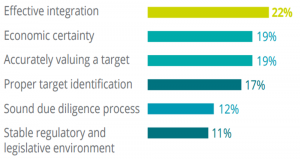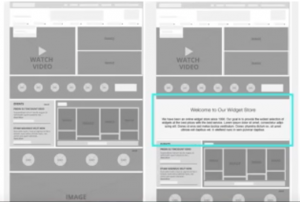
Every marketplace has its gaps or customer pain points. Any new entrant to a market will have to scour the market for existing gaps and attempt to fill them with their business. As marketplaces evolve, so do the shape and size of these gaps. New entrants need to be aware of where they exist, how it affects the consumer and how to resolve it with their business.
This article is going to help you identify these customer pain points and guide you through using that knowledge to tailor a personalised customer experience for your target market.
Identifying customer pain points – present and future
Customer pain points, to put it simply, are problems faced by your target market. Your potential customers may or may not be aware of the problem, the problem could already be solved, or it may not yet exist. When your customers are aware of the problems, it is a matter of identifying them and coming up with a solution. If a supposed solution already exists in the market, it comes down to how your product can offer a better solution. When the market is not aware of the problem, it falls upon you to identify it through research, innovation and often a pivot from established systems.
The three processes to identify customer pain points are:
Customer feedback
It is not up to you to make assumptions about customers needs, it is for them to tell you. What you have to do is to make use of the means at your disposal to find ways to get your customers to talk to you. Polls, surveys, cold-calling, social media, live chat, and product reviews offer the easiest and most cost-effective ways for you to do that. Your goal should be:
(a) Pinpoint how you can add value to the market (read: fix problems) with your product.
(b) Identify the size of the market.
(c) Identify gaps in the marketplace that remain unfixed by existing systems.
Engaging with Influencers
Today, there are no isolated marketplaces. Be it the industry bigwigs or the small fry, every company exists as a part of a mutually reliant system. What this means for new entrants to a marketplace is access to an expert peer group of professionals with proficient knowledge about the industry. That list includes industry experts, educators, researchers, analysts, brand journalists, bloggers, and even competitors who engage with and advise one another on the industry and its trends and quirks. By engaging with industry experts, new entrants are better educated about the expectations and problems that affect their market. Unlike monopolistic markets which are wary of outsiders, current marketplaces are more open to new entrants.
Walking in your customer’s shoes
Not all pain-points are created equally. Some ensue from a wish for a better lifestyle (the iPod made it easier to listen to music on the go), some from the need to increase productivity (vacuum cleaners over brooms) and then some that came into existence because of systems that were supposed to solve customer pain points. When you use a website that’s tough to navigate, or call customer care to be put on hold for hours on end, these are pain points that were created by the marketplace and not the customers themselves. And therein lies your opportunity to push a competitor from its pedestal and take its place. Walk in your customer’s shoes and explore the marketplace from their perspective. Every customer does not take the same buying journey. Trying to map out as many paths as possible will help you find the gaps in established systems.
Tailoring a personalised customer experience
The market has a fair share of companies trying to push their product onto consumers without considering how the product can be a solution to customer problems. In the short term, a fancy marketing strategy coupled with a decent product can bring in customers. But if the company is not targeting and addressing the needs of specific market niches that stand to gain value from the product, it will not last long in a competitive marketplace. Companies cannot afford to work outside their niche and hope that the right customers will find them.
By understanding customer pain points, you are made aware of the exact market(s) where your product will work and how to tailor a customer experience that strikes the best chord with your audience. A blanket approach to your customer base works with relatively isolated markets with lots of room for new entrants. But when you’re working in a crowded marketplace personalised experiences are what will bring in customers.
Let’s talk about the 3 ways you by which you can create personalized experiences for your customers:
Content creation
Content is the easiest and most cost effective way to target specific groups of customers. Unlike with paid media where you’re renting advertising space, running a blog gives you lifetime rights to the content (assuming you haven’t plagiarized the content from another source(s)). It is up to you to write as much or as little as you want. Content can be specific to a niche or target multiple niches covering every pain point affecting the marketplace.
Product flexibility
You’d expect a cupcake store to have all the crowd favorites like chocolate, toffee, lemon etc. But then you’ll also find the sugar-free, gluten-free and eggless varieties to target a smaller niche market. You cannot go to the market with a rigid idea for your product if you hope to expand to a wide audience. You might make the best coconut cupcakes in the world, but not everyone (does anyone?) likes coconut cupcakes. Different markets with different pain-points will find value in your product in different ways. Identifying those types and being flexible with your product offering lets every one of those markets find value in your product.
Customer Behaviour
Based on the time spent and the frequency of visits to a particular webpage on my company’s website, visitors are engaged through live chat with material that assists with the use of that particular product (demos, pricing, support etc.). By mapping customer behaviour you can identify where they encounter barriers in the buyer journey. Through manual intervention or by using custom triggers, you can engage customers at pain points through personalized messages. Identifying these gaps also helps breed familiarity with commonly encountered customer issues which keeps service and support team well informed about possible customer grievances.
Final Thoughts
Your customers don’t want to feel like they’re being targeted, grouped, researched and analysed as statistical figures. They expect businesses to be human and personal in every interaction. While it’s not possible to cater personally to the needs of every single customer, the workarounds discussed in this article are your next best step.
Business & Finance Articles on Business 2 Community
(80)









